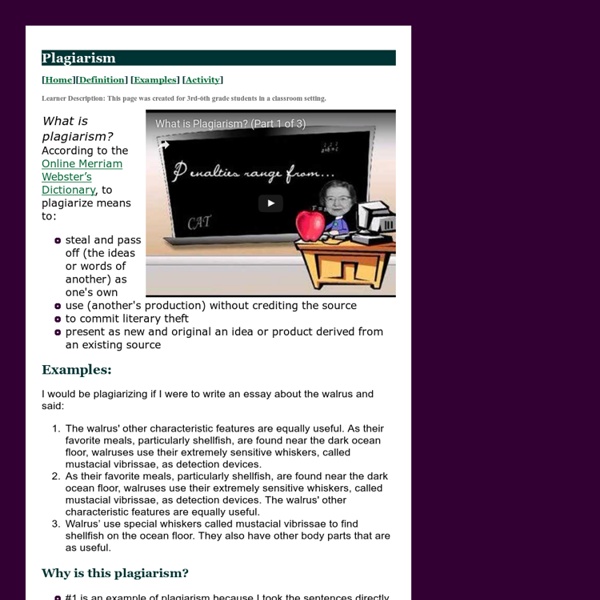Plagiarism Scavenger Hunt
Examples: I would be plagiarizing if I were to write an essay about the walrus and said: The walrus' other characteristic features are equally useful. Why is this plagiarism? #1 is an example of plagiarism because I took the sentences directly from this National Geographic Website. Remember, even though you learned from the walrus site and wrote sentences in your own words, the information still does not belong to you! How do I avoid plagiarism? Plagiarism Scavenger Hunt Activity The Plagiarism Scavenger Hunt assignment will teach you more about plagiarism. Instructions: Click here to download the worksheet for your answers. Hunt 1: Kids Understanding Plagiarism What is Plagiarism: (be sure to read all 3 pages) What is the Latin word for plagiarism? Hunt 2: Detecting Plagiarism Free Plagiarism Detector: What percentage does the site tell you is plagiarized? Is plagiarism against the law? Back to Top
50 Essential Sites and People for School Librarians | Deep Librarian
Here are my top 50 essential websites, people, or blog posts for school librarians. These are people and sites to which I consistently return. Some of the entries below are skewed towards California school libraries, but I think they’re beneficial for anyone. Listed in no particular order. American Association of School Librarians (AASL). I continually refer to their Standards for the 21st Century Learner.School Library Journal (SLJ). Did I leave out your favorite website or person?
Storyboard That: The World's Best FREE Online Storyboard Creator
Related:
Related:



